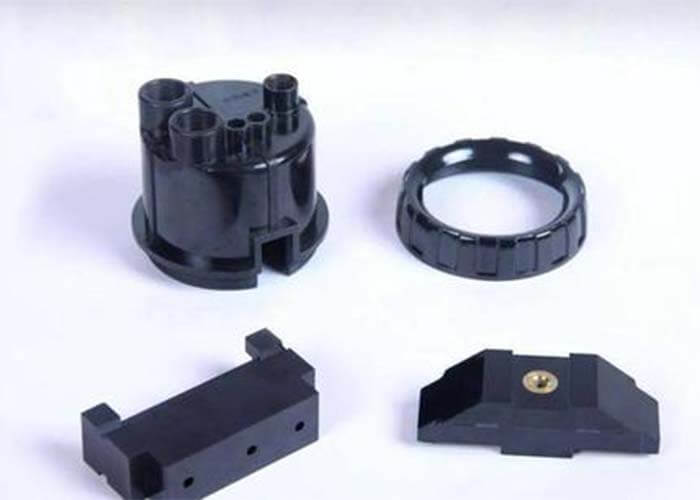Introduction to injection molding of thermoset BMC, the BMC moulding process.
BMC is the abbreviation of glass fiber-reinforced unsaturated poly-cooled thermosetting plastic, and it is currently the most widely used type of reinforced thermosetting plastic.
Features and applications of BMC
BMC has good physical, electrical, and mechanical properties, so it has a wide range of applications, such as the production of mechanical parts such as gearbox components, intake pipes, valve covers, bumpers, etc.; Durable aviation, construction, furniture, and other aspects are also widely used; in its traditional electrical appliances field, its use is also more and more extensive.
1) Feeding system
Regardless of the screw type or the plunger type, an extrusion-type feeding device must be added to force the material into the barrel. The feeding device mostly adopts a plunger-type pressurizing feed.
2) Injection molding system
Because the injection volume of the plunger injection molding machine is accurate and constant, the glass fiber is dispersed in the melt with less damage. Therefore, the plunger injection molding machine is used more, but the exhaust is inconvenient.
3) Heating system
In BMC moulding process, it is very important to control the temperature of the barrel. There must be a set of control system to control the temperature to ensure that the temperature from the feeding section to the nozzle is the best.
Currently, constant-temperature water or constant-temperature oil is used for heating.
Electric heating can also be used.
4) Mold clamping device
Several clamping devices such as mechanical, hydraulic, and full hydraulic are mostly used.
5) Mould
The BMC injection mold is somewhat different from the usual thermoplastic and thermoset injection molding, mainly because the shrinkage rate of BMC is low, so the cavity size should be changed when designing.
What are BMC moulding processes?
There are 5 main points in the BMC moulding process.
1) Barrel temperature and mold temperature in BMC moulding process
During injection molding, BMC is required to maintain a low-viscosity flow state for a long time at the barrel temperature; generally, the barrel temperature should meet the low limit of BMC.
The temperature of the barrel is generally divided into two or three stages. The temperature near the hopper is lower and the temperature near the nozzle is higher.
Generally, the difference is 20-60C, and the mold temperature is generally controlled at 135~185C;
2) Injection pressure in BMC moulding process
Because BMC has poor fluidity, fast curing, and a complex mold structure, the injection pressure should be higher, generally 80~16OMPao.
3) Injection speed in BMC moulding process
The increase in the injection speed helps to improve the surface quality of the plastic parts and shorten the curing time, but it is not conducive to exhaust gas and increases the degree of orientation of the glass fiber.
Therefore, a lower injection speed should be used under the premise of ensuring the surface quality of the plastic parts, usually 1.8-3.5m/min.
4) Screw speed and backpressure in BMC moulding process
If a screw injection molding machine is used, the screw will damage the glass fiber when injecting BMC. In order to minimize the damage to the glass fiber, the screw speed should be low, generally 20~5Or/min. According to the viscosity of BMC, it is better to use low back pressure, generally, 1.4-2.0MPa.
5) Molding cycle in BMC moulding process
Due to the different sizes and complexity of the plastic parts, the processing time of each section is also different. Generally, the injection time is 2-20s, and the holding time is 10-20s/mm (thickness).
You may also be interested in the below articles.
Summary Of 50 Injection Mold Structure Operation Dynamic Diagrams
Auto Parts Stamping Die Design Concept




